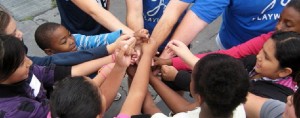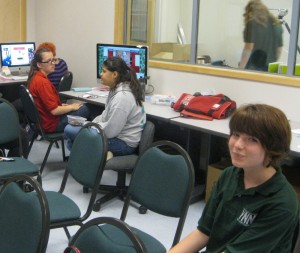The kids obviously adored Coach “Trell” as she strode into an elementary school in San Pablo, Calif., jumping around her and asking questions. The coach, Shantrell Sneed, was with Playworks, an Oakland, Calif. nonprofit whose mission is to turn recess into a constructive, fun and healthy experience.
When recess is largely unsupervised, conflicts arise on the schoolyard which interrupts class time as teachers work to resolve altercations. Or kids get bullied and traumatized.
So Playworks coaches organize play during recess so it promotes physical activity, conflict resolution, friendship and improved academic performance – which research shows all ultimately help the students live longer, healthier lives.
One game Coach Trell taught was roshambo — the “rock, paper, scissors” hand game. As kids defeat rivals, they accumulate “cheerleaders,” and all shout out the final winner’s name. One student asked if the winner got a prize.
“Yes, you get the entire class as your cheerleader as a prize,” Sneed said.
Playworks launched in 1996, and with funding from the Robert Wood Johnson Foundation it has expanded into some 15 cities and trained more than 100,000 kids in healthy play and conflict resolution. And principals are grateful for the results. The one at the San Pablo school told me that before she brought in Playworks in 2010, about five children a day were sent to her office for discipline issues. A year later is was down to just a few a week, said Alicia Azcarraga, principal of Riverside Elementary School.
A 2011 study of eight Bay Area Playworks sites found when implemented successfully it improved the school climate, supported better academic achievement, contributed to feelings of safety on campus, and improved relationships among students and between students and adults.
Schools pay some of the cost for the program, in part to ensure their commitment to its success, and fundraising by Playworks covers the rest.
Playworks is another example of the many brilliant programs underway by numerous organizations around the country to reduce disparities in health. And not by providing more medical care, which largely only addresses diseases after they arise, but by improving the communities in which people live.























